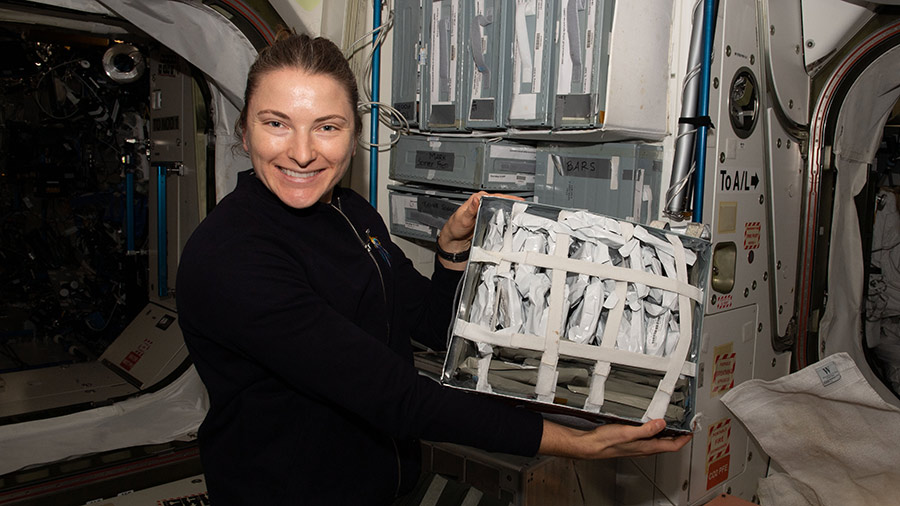
The Expedition 66 crew kicked off the week today exploring how living in space affects psychology and ways to manipulate objects with sound. The residents aboard the International Space Station also serviced U.S. spacesuits and worked on an artificial gravity-generating incubator.
NASA Flight Engineers Kayla Barron and Raja Chari took turns participating in a robotics test for the Behavioral Core Measures experiment on Monday. The monthly sessions investigate how living in a confined space in microgravity affects crew stress, performance, and behavior.
Barron then joined ESA (European Space Agency) astronaut Matthias Maurer and practiced measuring fluid pressure in the eye. She also photographed cotton cell samples growing for the Plant Habitat-05 space agriculture study. Maurer and Chari partnered together on Monday afternoon resizing a pair of U.S. spacesuits.
Maurer started his day on the Ultrasonic Tweezers study using acoustics to manipulate objects remotely and without physical contact. Vande Hei assisted the German astronaut during the experiment that explores using ultrasonics to trap and isolate objects to study samples and avoid contamination on planetary surfaces.
NASA astronaut Thomas Marshburn worked throughout Monday on science hardware ensuring critical research operations run smoothly in weightlessness. The three-time station visitor installed and serviced components inside the Cell Biology Experiment Facility, an incubator with an artificial gravity generator. He finally swapped drying agents, or desiccants, inside science freezers that preserve research samples.
Vande Hei joined Roscosmos Flight Engineer Pyotr Dubrov in the station’s Russian segment for more wireless gear maintenance. Commander Anton Shkaplerov set up hardware that will monitor how natural and man-made events on Earth affect the upper atmosphere.
